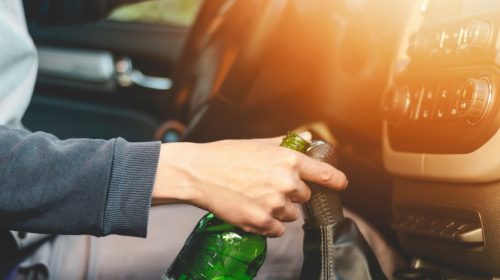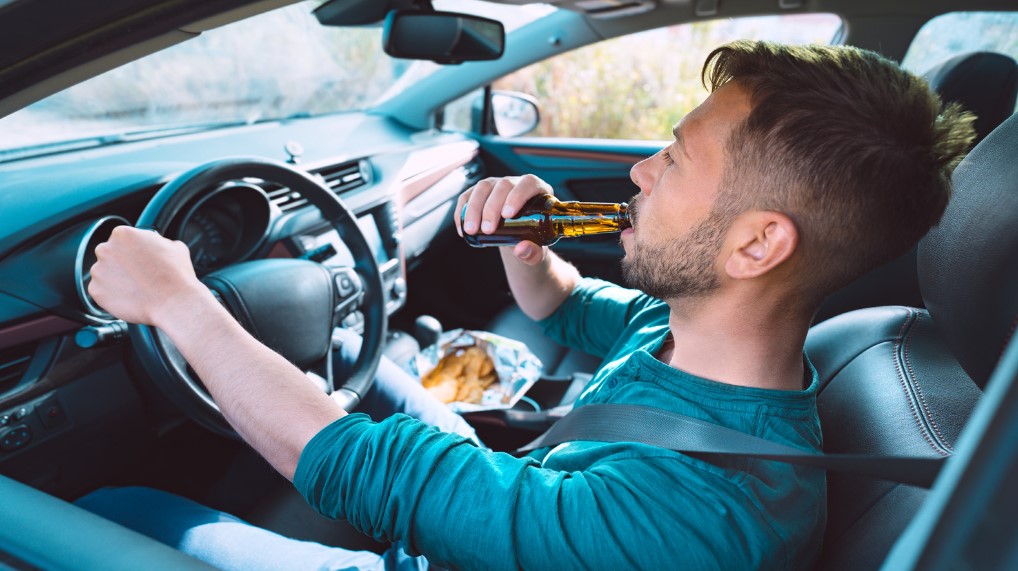If you enjoy a drink or two, it’s important to understand the concept of alcohol units and how they can impact your ability to drive safely. Whether heading out for a night on the town or enjoying a glass of wine with dinner, knowing how many units you’ve consumed is essential in making responsible decisions.
In this blog post, we’ll dive into what alcohol units are, provide an easy-to-use calculator to determine your intake, discuss safe levels of consumption, and explore the consequences of drink-driving. So grab a cuppa, and let’s get started – because knowledge is power when it comes to staying safe on the roads!
What is a Unit of Alcohol?

A unit of alcohol is a standardized measure used to quantify the amount of pure alcohol in a drink. In the UK, one unit is equivalent to 10 milliliters (ml) or 8 grams of pure alcohol. This measurement helps individuals understand and track their alcohol consumption more accurately.
By knowing the number of units in a drink based on its volume and alcohol by volume (ABV), people can make informed decisions about their drinking habits and stay within recommended limits to promote responsible alcohol consumption. Understanding units of alcohol is crucial for maintaining a healthy lifestyle and avoiding the risks associated with excessive drinking, such as impaired judgment, health issues, and legal consequences related to alcohol consumption.
How Many Units Have I Drunk?
Alcohol consumption can sometimes become a bit blurry when it comes to tracking how much you’ve had. However, there are ways to estimate the number of units you have consumed. One unit is equivalent to 10 millilitres or eight grams of pure alcohol. To calculate your intake, multiply the alcohol volume in your drink by its percentage strength and divide by 1o. This will give you an idea of how many units you have drunk. Remember, it’s important to be mindful of your alcohol intake for both health and safety reasons!
How many Units of Alcohol Should I Drink a Week?
It is important to be mindful of how many units of alcohol you consume in a week. The recommended limit for both men and women is 14 units per week. This equates to about six pints of beer or seven glasses of wine. However, it’s best to spread these units out over several days rather than consume them all simultaneously. Remember, moderation is key when it comes to alcohol consumption.
How Many Units to Drive?

When it comes to alcohol and driving, it’s crucial to understand the legal limits in your country. In the UK, the drink-drive limit is 80 milligrams of alcohol per 100 millilitres of blood (or 35 micrograms per 100 millilitres of breath). It’s important to note that this limit applies to car drivers, motorcycle riders, and even cyclists. Violating this limit can lead to severe consequences, so always ensure you are within the legal boundaries before getting behind the wheel. Stay informed and stay safe!
How Long After Drinking Can You Drive?
There is no set time limit that means it’s safe for you to drive after drinking alcohol. Because everyone reacts differently to alcohol, it can be difficult to know how long it will be before it leaves your system. The length of time you need to wait until you’re completely sober can also depend on the amount and type of alcohol you drank, so your waiting period may be different every time you drink.
In general, you can expect a unit of alcohol to take around an hour to be processed by your body, but this isn’t always the case. To be extra safe, it’s best to leave 12 to 24 hours between the time you finish drinking and the time you drive, especially if you drank a lot of alcohol. This cautious approach helps ensure that you are not impaired when getting behind the wheel, reducing the risk of accidents and legal consequences related to driving under the influence of alcohol.
Safe Levels of Alcohol Consumption
Drinking alcohol can be a social and enjoyable experience, but it’s important to know your limits. Safe levels of alcohol consumption vary depending on factors such as age, weight, and overall health. The general recommendation for men is to consume no more than 14 units of alcohol per week, while women are advised to limit their intake to 10 units. However, it’s essential to remember that even within these guidelines, moderation is key. It’s always wise to listen to your body and be aware of any negative effects that may occur from drinking too much.
Consequences of Drink-Driving
Drink-driving can have serious consequences, both for the individual and others on the road. It impairs your judgment, coordination, and reaction time, increasing the risk of accidents and injuries. If caught driving, you may face hefty fines, license suspension or revocation, mandatory alcohol education programs, and even imprisonment in severe cases.
Moreover, a drunk driving conviction can impact your insurance premiums and future employment prospects. The potential harm caused by drunk driving should never be underestimated.
Drink-Driving Penalties

If you choose to get behind the wheel after consuming alcohol, be prepared to face serious consequences. Drink-driving is a criminal offence that can result in hefty fines, license suspension or revocation, and even imprisonment. The severity of the penalties depends on factors such as your blood alcohol concentration (BAC), previous convictions, and whether any harm or damage was caused while driving under the influence. It’s crucial to understand that risking your life and others’ by drink-driving is never worth it. Be responsible and make smart decisions when it comes to drinking and driving.
Other Problems You May Face if Caught Drink-Driving
Apart from legal consequences, being caught drink-driving can lead to a host of other problems. Your car insurance premiums will likely skyrocket as insurers see you as a high-risk driver. A conviction may also affect your employment prospects, especially if your job requires driving or involves trust and responsibility. Furthermore, having a drink-driving conviction on your record could make it difficult for you to travel internationally, as some countries have strict entry requirements for individuals with criminal records related to alcohol offences.
How to Avoid Drink Driving?
To avoid drink driving, it’s essential to prioritize safety and responsibility. While being aware of drink drive limits can help you avoid drink driving, the safest route is to abstain from alcohol if you plan on driving. On days when alcohol consumption is on the agenda, ensure you have alternative transport plans in place by checking bus schedules or saving taxi numbers ahead of time. Additionally, if you’re out with friends or family, consider appointing a designated driver who will remain sober to ensure everyone gets home safely.
In situations where unexpectedly consuming alcohol arises, it’s crucial not to drive if you have any doubts about your level of intoxication. Opt for alternative arrangements, no matter the inconvenience, rather than taking the risk of driving when there’s a possibility of impaired judgment due to alcohol consumption. Prioritizing safety and responsible decision-making can greatly reduce the potential risks associated with drink driving, protecting not only yourself but also others on the road.
Conclusion
Understanding how many units of alcohol it takes to be over the legal drink-driving limit is crucial for everyone who consumes alcoholic beverages. By knowing the concept of alcohol units and utilizing an alcohol units calculator, you can easily determine how much you have consumed and whether it is safe to get behind the wheel.
Now armed with knowledge about how many units are safe for driving purposes, along with information about potential consequences if those limits are exceeded, you will be able to make informed decisions when it comes to alcohol consumption and driving.
FAQs
How many units per hour can you drive?
The rate at which the body processes alcohol can vary among individuals, but on average, the liver metabolizes about one standard drink (equivalent to around one unit of alcohol) per hour. However, it’s important to note that this can vary based on factors such as body weight, sex, and overall health.
Can I drive after 1 pint?
It’s advisable to refrain from driving after consuming alcohol, including one pint. Even a small amount of alcohol can impair your coordination, reaction time, and judgment, increasing the risk of accidents on the road.
What is 4 units of alcohol?
Four units of alcohol can be equivalent to approximately two pints of regular-strength beer, two small glasses of wine, or four single shots of spirits. It’s essential to be mindful of the alcohol content in different beverages and how they contribute to your overall intake.
Can you drive after 0.5 alcohol?
Even a small amount of alcohol, such as 0.5 units, can impair your driving abilities. It’s safest to wait until you are completely sober before getting behind the wheel to ensure your safety and the safety of others on the road.
How many units do you lose an hour?
On average, the human body eliminates about one standard drink (unit) per hour. However, this can vary depending on factors like age, weight, gender, and metabolism.
What are the units for a breathalyzer?
A breathalyzer measures the alcohol content in your breath, typically displaying results in grams per deciliter (g/dL) or milligrams per liter (mg/L).
How many units is a heavy drinker?
There isn’t a specific number of units that defines a heavy drinker as it can vary based on individual tolerance and habits. Generally, heavy drinking is considered to be consuming large amounts of alcohol regularly.
Is 2 units of alcohol a lot?
Two units of alcohol is generally considered a moderate amount for most adults, but it’s essential to remember that individual tolerance varies. It’s always best to drink responsibly and be mindful of alcohol’s effects on your body and driving abilities.

